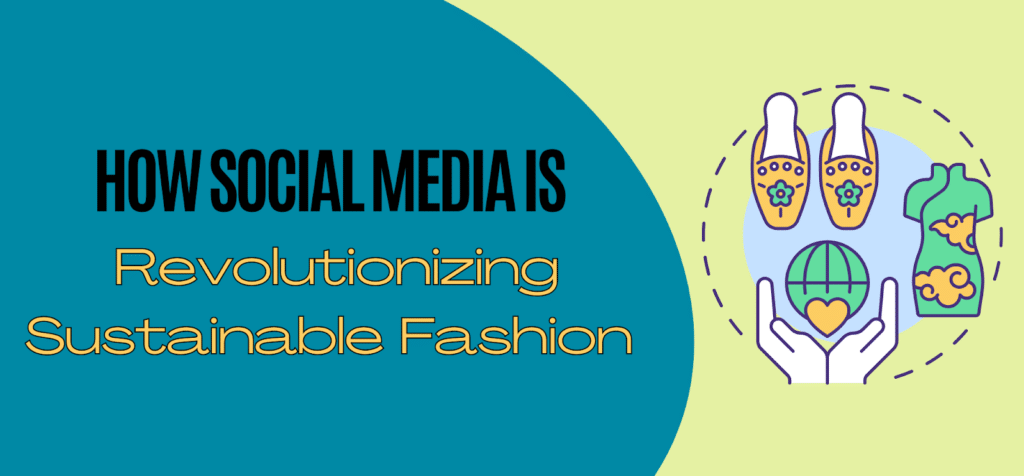I’m thrilled to dive into a topic close to my heart: sustainable fashion and its dynamic relationship with social media. The fashion industry, historically plagued by trends that appear and vanish overnight, has taken a transformative turn in recent years. Consumers demand more ethical and eco-friendly fashion choices with the rise of environmental consciousness. Furthermore, this shift is reshaping consumer behavior and influencing how brands approach their production and marketing strategies.
Social media has become the driving force behind this remarkable shift towards sustainability, impacting not only consumers and brands but also our planet. Let’s examine the intricate relationship between sustainable fashion and social media.
The Rise of Sustainable Fashion
Sustainable fashion isn’t just a fleeting trend; it’s a movement fueled by consumers who’ve awakened to their clothing choices’ environmental and ethical consequences. This movement encompasses a multifaceted approach to revamping the fashion industry, touching upon various aspects such as:
Responsible Sourcing of Materials:
Traditional fashion practices often rely on resource-intensive and environmentally damaging materials. In contrast, sustainable fashion champions eco-friendly and responsibly sourced materials such as organic cotton, hemp, Tencel, and recycled fibers. This reduces the ecological footprint, conserves water, and diminishes reliance on harmful chemicals in textile production.
Reduced Waste through Recycling and Upcycling:
The fashion industry generates staggering waste through unsold merchandise and discarded clothing. Consequently, sustainable fashion combats this issue through recycling and upcycling. Recycling reuses textiles and materials from old garments, extending their lifecycle. Additionally, upcycling transforms surplus items into new, unique, and high-quality clothing pieces, effectively reducing landfill waste and the demand for fresh resources.
This shift towards sustainable practices is evident in material choices and production methods. Sustainable fashion encourages the adoption of eco-friendly manufacturing processes. For instance, technologies that minimize water and energy consumption are gaining prominence. These innovations contribute to the overall goal of creating a more environmentally responsible and efficient industry.
Collectively, these pillars drive the fashion industry away from its linear, resource-depleting model towards a circular and responsible one that aligns with the values of mindful consumers.
Spreading Awareness: The Power of Social Media

Social media, often described as the heartbeat of the digital age, holds a pivotal role in elevating awareness about sustainable fashion. If you share your thoughts, opinions, and experiences on Threads on this topic, you may need to purchase followers, likes, and views services to reach a wider audience. You can check Views4You buy Threads likes service to gain organic growth.
After buying services, you can do these;
Share Information about Sustainable Practices: Social media empowers users to disseminate knowledge regarding sustainable fashion practices. This includes tips on eco-friendly clothing choices, DIY sustainable fashion projects, and advice on responsible consumption.
Shed Light on the Environmental Toll of Fast Fashion: Through impactful visuals, personal stories, and well-researched content, social media influencers and activists can illuminate the profound environmental consequences of the fast fashion industry. This includes excessive waste, pollution, and the depletion of finite resources.
Showcase the Benefits of Choosing Eco-Conscious Brands: Influencers and sustainable fashion enthusiasts use their online presence to spotlight the advantages of supporting eco-conscious brands. They share reviews, outfit inspirations, and real-life experiences, making it easier for followers to embrace sustainable choices.
Utilize Hashtags, Stories, and Posts for Viral Sustainability Messages: The strategic use of hashtags, engaging stories, and compelling posts on social media platforms, including Threads, allows sustainability messages to rapidly gain traction. These messages can reach millions of users within mere hours, sparking discussions and inspiring change on a global scale.
This synergy between social media and sustainable fashion is not just a trend; it’s a dynamic force driving positive change and encouraging responsible consumer choices.
Building Communities: Connecting Like-Minded Individuals
Social media platforms serve as a virtual gathering place for like-minded individuals passionate about sustainable fashion. These platforms offer a wealth of benefits, including:
- Users can openly share their sustainable fashion journey, from successes to challenges. This fosters a sense of community where individuals can relate to one another’s experiences and offer encouragement.
- Social media allows eco-conscious individuals to exchange tips and tricks for sustainable living. Whether it’s advice on thrifting, eco-friendly laundry practices, or upcycling projects, these platforms become treasure troves of valuable information.
- Enthusiasts can discuss their favorite sustainable brands, sharing reviews, insights, and the latest product releases. By promoting these brands, they contribute to the growth of the sustainable fashion market.
- Perhaps most importantly, social media cultivates a sense of belonging to a larger movement dedicated to responsible fashion choices. This unity inspires individuals to make informed decisions as consumers, contributing to the broader shift toward sustainable fashion practices.
Social media platforms serve as catalysts for change, fostering a global network of individuals committed to sustainable fashion and a more environmentally conscious lifestyle.
Showcasing Sustainable Brands: Visual Storytelling
Sustainable fashion brands leverage social media to showcase their products, values, and mission. They do so by:
– Creating visually captivating content to attract a wider audience.
– Distinguishing themselves from fast fashion competitors.
– Narrating their sustainability journey.
– Offering behind-the-scenes glimpses into production processes.
– Highlighting their positive contributions to the environment and local communities.
Consumer Empowerment: Shifting the Power Dynamic
Social media has orchestrated a remarkable shift in the power dynamic within the fashion industry, placing the reins squarely in the hands of consumers. This newfound empowerment enables consumers to:
- Demand transparency and sustainability from fashion companies.
- Hold brands accountable for unethical practices.
- Boycott brands that don’t align with their values.
- Champion and support brands that prioritize sustainability.
In this evolving landscape, consumers are no longer passive players; they are influential change-makers shaping the future of fashion toward greater sustainability and ethical responsibility.
Closing Remarks
Social media is undeniably the driving force behind the sustainable fashion revolution. It empowers consumers to make informed choices and fosters connections within the sustainable fashion community. It also amplifies the voices of activists and influencers advocating for a more sustainable future. Sustainable fashion brands, in turn, benefit from the reach and engagement social media platforms offer, aligning their goals with those of conscious consumers.
As consumers become increasingly conscious of their fashion choices’ environmental and social impacts, social media’s role in promoting sustainable fashion practices and brands will only grow. By harnessing the power of social media, we can collectively steer the fashion industry towards a more responsible, ethical, and eco-friendly future. Together, we’re making fashion a statement and a force for positive change! #SustainableFashion #FashionRevolution





